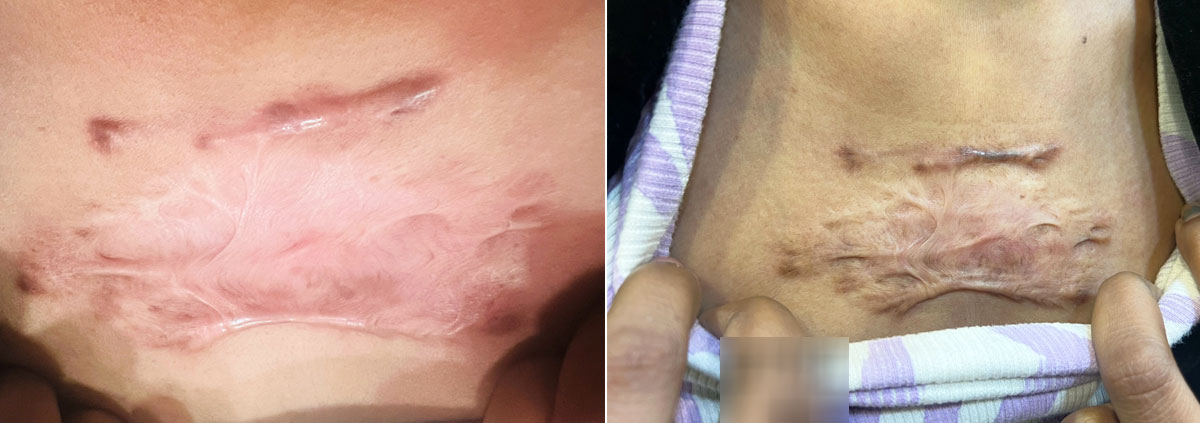What Causes Keloids?
Keloids develop from an overzealous, excessive in vivo response to wound healing which leads to excessive collagen production. This hyper-production causes the Keloid to have the raised, firm, texture, which is the hallmark of Keloid. Although the underlying reasons for such a hyper reaction are not clear, some factors that might contribute to this are:-
- Injuries or Trauma - Keloids may arise after surgical site incisions, burns, piercings, tattooing, or even minor lacerations.
- Genetics - Having a history of Keloids in their family makes it more prone to develop a Keloid.
- Skin Type - Darker skin tones are more prone to Keloid formation.
- Infections & Inflammation - These can also amplify the body's healing response, leading to an increased chance of Keloids.
Recognizing Keloids - Symptoms and Characteristics
- Appearance - Keloids are fibrotic, hyperpigmented, glossy and may show color range ranging from pink to deep brown across variation of skin tone.
- Texture - They feel firm and rubbery to the touch.
- Growth Pattern - By contrast to typical scars, Keloids grow outside the borders of the original wound.
- Discomfort - Itching, tenderness or pain in Keloid cases often happens, especially during the stages of the development.
- Location - Areas commonly affected are the chest, shoulders, earlobes, and cheeks but they may occur over any part of the body.
Diagnosis & Medical Evaluation
Diagnosing Keloids typically involves a clinical examination by a dermatologist. In every case, the clinical picture and patient history are enough to make the diagnosis. Nevertheless, the biopsy of skin may be suggested as a corroboration test if the nature of the growth is not clear enough. In Dermavision - The Skin Clinic, our clinicians carefully examine each case to achieve correct diagnosis and plan a unique treatment.

Keloid treated over 3 months
Treatment Options for Keloids
- Corticosteroid Injections - This is a common first-line treatment for Keloids. Corticosteroid injections attenuate inflammation and collagenogenesis, contributing to flattening and softening of the Keloid with time.
- Cryotherapy - Cryotherapy uses liquid nitrogen to freeze the Keloid in order to decrease/reduce Keloid size. This treatment is especially effective for smaller Keloids.
- Laser Therapy - High-tech laser treatments e.g., pulsed-dye lasers can enhance the textural and pigmentary aspects of Keloids. These therapies, in addition, promote collagen remodeling to give skin smoother textures.
- Surgical Removal - In some cases, Keloids can be surgically excised. There is a tendency for recurrence however often more pronounced than the primary Keloid and up to the risk of recurrence is not taken into account with postoperative treatments such as radiation or corticosteroids.
- Radiation Therapy - Radiation therapy can be applied postoperatively as a means of preventing Keloid recurrence via collagen production limitation during the wound healing period.
- Silicone Gel Sheets - The use of silicone sheets or gels can flatten Keloids and reduce redness with time. This treatment is non-invasive and ideal for smaller Keloids.
- Emerging Treatments – Such advances as Microneedling, platelet-rich plasma (PRP) therapy and some immunomodulators demonstrating potential for Keloid management. At Dermavision - The Skin Clinic the Dermatologists are up to date to provide advanced care.


